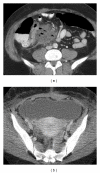The prevention of surgical site infection in elective colon surgery
- PMID: 24455434
- PMCID: PMC3881664
- DOI: 10.1155/2013/896297
The prevention of surgical site infection in elective colon surgery
Abstract
Infections at the surgical site continue to occur in as many as 20% of elective colon resection cases. Methods to reduce these infections are inconsistently applied. Surgical site infection (SSI) is the result of multiple interactive variables including the inoculum of bacteria that contaminate the site, the virulence of the contaminating microbes, and the local environment at the surgical site. These variables that promote infection are potentially offset by the effectiveness of the host defense. Reduction in the inoculum of bacteria is achieved by appropriate surgical site preparation, systemic preventive antibiotics, and use of mechanical bowel preparation in conjunction with the oral antibiotic bowel preparation. Intraoperative reduction of hematoma, necrotic tissue, foreign bodies, and tissue dead space will reduce infections. Enhancement of the host may be achieved by perioperative supplemental oxygenation, maintenance of normothermia, and glycemic control. These methods require additional research to identify optimum application. Uniform application of currently understood methods and continued research into new methods to reduce microbial contamination and enhancement of host responsiveness can lead to better outcomes.
Figures


Similar articles
-
Colon preparation and surgical site infection.Am J Surg. 2011 Aug;202(2):225-32. doi: 10.1016/j.amjsurg.2010.08.038. Epub 2011 Mar 22. Am J Surg. 2011. PMID: 21429471 Review.
-
Preventive systemic antibiotics in colorectal surgery.Surg Infect (Larchmt). 2008 Dec;9(6):547-52. doi: 10.1089/sur.2008.9956. Surg Infect (Larchmt). 2008. PMID: 19216664
-
Comparing Mechanical Bowel Preparation With Both Oral and Systemic Antibiotics Versus Mechanical Bowel Preparation and Systemic Antibiotics Alone for the Prevention of Surgical Site Infection After Elective Colorectal Surgery: A Meta-Analysis of Randomized Controlled Clinical Trials.Dis Colon Rectum. 2016 Jan;59(1):70-78. doi: 10.1097/DCR.0000000000000524. Dis Colon Rectum. 2016. PMID: 26651115
-
[Impact of bowel preparation on surgical site infections and anastomotic leakage after elective colon resection: results of a retrospective study with 260 patients].Chirurg. 2020 Jun;91(6):491-501. doi: 10.1007/s00104-019-01099-1. Chirurg. 2020. PMID: 31915873 German.
-
Evidence-based Prevention of Surgical Site Infection.Surg Clin North Am. 2021 Dec;101(6):951-966. doi: 10.1016/j.suc.2021.05.027. Surg Clin North Am. 2021. PMID: 34774274 Review.
Cited by
-
Intravenous cephalosporin versus non-cephalosporin-based prophylaxis to prevent surgical site infections in colorectal surgery patients: A systematic review and meta-analysis.Ann Med Surg (Lond). 2021 Jun 16;67:102401. doi: 10.1016/j.amsu.2021.102401. eCollection 2021 Jul. Ann Med Surg (Lond). 2021. PMID: 34257956 Free PMC article. Review.
-
Metronidazole Delivery Nanosystem Able To Reduce the Pathogenicity of Bacteria in Colorectal Infection.Biomacromolecules. 2022 Jun 13;23(6):2415-2427. doi: 10.1021/acs.biomac.2c00186. Epub 2022 May 27. Biomacromolecules. 2022. PMID: 35623028 Free PMC article.
-
Can routine preoperative data predict adverse outcomes in the elderly? Development and validation of a simple risk model incorporating a chart-derived frailty score.J Am Coll Surg. 2014 Oct;219(4):684-94. doi: 10.1016/j.jamcollsurg.2014.04.018. Epub 2014 Jun 3. J Am Coll Surg. 2014. PMID: 25154667 Free PMC article.
-
Bio-Inspired Self-Healing, Shear-Thinning, and Adhesive Gallic Acid-Conjugated Chitosan/Carbon Black Composite Hydrogels as Suture Support Materials.Biomimetics (Basel). 2023 Nov 12;8(7):542. doi: 10.3390/biomimetics8070542. Biomimetics (Basel). 2023. PMID: 37999183 Free PMC article.
-
Ciprofloxacin-Collagen-Based Materials with Potential Oral Surgical Applications.Polymers (Basel). 2020 Aug 25;12(9):1915. doi: 10.3390/polym12091915. Polymers (Basel). 2020. PMID: 32854342 Free PMC article.
References
-
- Kirkland KB, Briggs JP, Trivette SL, Wilkinson WE, Sexton DJ. The impact of surgical-site infections in the 1990s: attributable mortality, excess length of hospitalization, and extra costs. Infection Control and Hospital Epidemiology. 1999;20(11):725–730. - PubMed
-
- Fry DE. The surgical infection prevention project: processes, outcomes, and future impact. Surgical Infections. 2006;7(supplement 3):S17–S26. - PubMed
-
- Horan TC, Gaynes RP, Martone WJ, Jarvis WR, Emori TG. CDC definitions of nosocomial surgical site infections, 1992: a modification of CDC definitions of surgical wound infections. Infection Control and Hospital Epidemiology. 1992;13(10):606–608. - PubMed
-
- Centers for Disease Control. July 2013 CDC/NHSN protocol clarifications. http://www.cdc.gov/nhsn/PDFs/pscManual/9pscSSIcurrent.pdf.
-
- Robson MC, Krizek TJ, Heggers JP. Biology of surgical infection. Current Problems in Surgery. 1973;10(3):1–62. - PubMed
Publication types
LinkOut - more resources
Full Text Sources
Other Literature Sources
Medical

